Today I finally got the prototypes of our new line of swords, what I am currently calling our “Tough-As-Hell” line, or “Midnight” line of swords. We also got our Aluminum practice swords and “Leung Ting style” swords to test out. First we tested edge vs edge sword bashing, then how they held up against wood (in case you smash poles or use sword dummies), and then on to chopping concrete blocks (just for fun!)
Just a reminder – these are prototypes. The final product will be slightly different. We test different handles, blades, powder coating methods, etc on prototypes and pick the best for production. These pictures will not 100% match the final product – so please keep that in mind
The edge vs edge testing went as expected. The tougher/harder steels dented the softer ones with the same blade grind. D2 always dented 440C for example. No surprise there, but one of our new “tough-as-hell” swords was not heat-treated like it was supposed to be for production, so it performed the worst instead of the best. This just goes to show how critical heat treatment is to a blade. You can buy the best steel on the planet, but if it is not heat treated right a much softer steel with dent it – which is why you need to know that what you buy is heat-treated properly. Case in point – our 440C blade actually got stuck in our high-carbon spring steel blade when hitting them edge to edge. If the high-carbon prototype blade was heat-treated properly the result would have been opposite. Needless to say, the production run will be heat-treated all the way.
I will also point out here that the black power coating does come off when steel vs steel contact is made. It can also scrape off if your blade is trapped and you try to pull it free from an opponent’s quillon. The coating on these swords is meant to protect the blade from rusting, not to withstand weapon vs weapon contact. I was curious how it would hold up against poles and even cement, though, so I did some testing.
First, I took one of each blade and struck a garden post. The pictures I show here are of the blade before the hit and after the hit (and you can see the damage to the post). I was using my non-dominate hand for the striking and it was by no means at full force. Not a single blade was damaged, not even the aluminum. All these swords will hold up vs poles or sword dummies. Also, there was no chipping of the black powder-coat. In the end I did hit pole full force with one of the blades and it sunk deep into the wood and had to be pried out. There was no damaged to the sword.
Next, I took the black swords (and even the aluminum one) and smashed a heavy-duty concrete block (not the cheap cement ones). I was very pleased to see that 1) the swords were not damaged (to my surprise). I had previously hacked granite rocks and cement blocks with our D2 blades, so knew they were tough – but I was surprised how well these did. Only the aluminum one had a small dent. 2) the powder coat barely wore away. (see pics.) the last picture I show is a close up of the non-heat-treated black power-coated blade. You can see there is minimal damage to the powder-coat and edge of blade – once the blades are properly heat treated I doubt one would even see these little scratches. You will also notice 2 blade thicknesses. One has a thin edge and one has a thick one. The thick edges sustained no damage at all. The thin one (which is not made for hitting anything but flesh) only has very slight markings on it.
Overall we are very pleased with these prototypes and will be putting these swords into production for holiday delivery.

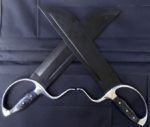
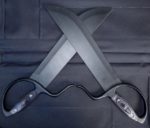
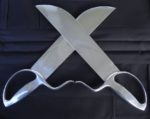
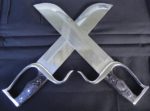
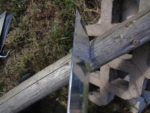
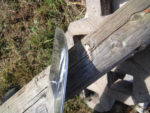
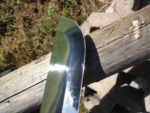
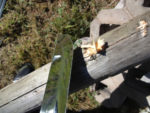
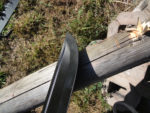
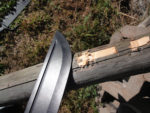
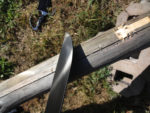
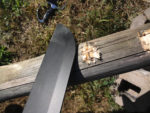
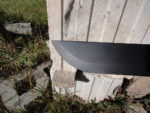
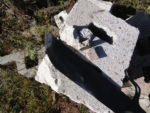
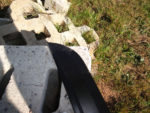
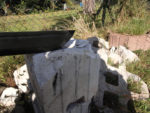
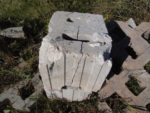
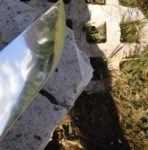
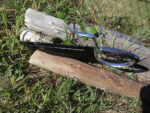
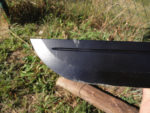
Just want to point out, for those of you who don’t realize it, that EWC is really setting the standard by using the best of modern construction techniques and modern materials for their BJD AND actually spending the money to test this stuff out. You read a lot of articles in the knife blogs by folks who “know” that a certain steel should never be used for swords, or is the latest and greatest, but in most cases they have (1) never handled a Wing Chun knife and (2) would never dream of intentionally destroying $400 to $900 pairs of knives for R&D. You don’t “see” any of that burned cash when you buy a pair of EWC knives but it comes through as you use them.